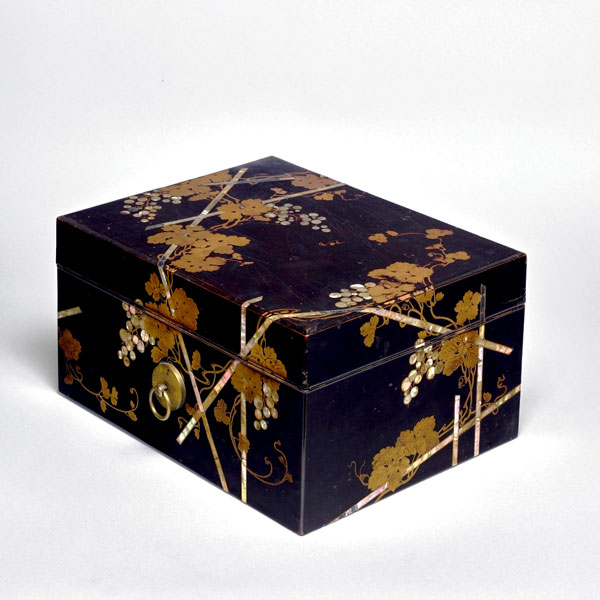Decorative Arts | 16th–19th century
-

Paper Box with a Grape Trellis, Edo Period, 18th century
Japanese Gallery (Honkan) Room 8
May 20, 2025 (Tue) - August 3, 2025 (Sun)From the late 16th century, changes in society helped artisans to develop the decorative arts. In the Azuchi–Momoyama period (1573–1603), samurai warlords united Japan after more than a century of fighting. The following Edo period (1603–1868) saw economic growth under a new samurai government, with merchants and other people gaining the wealth to buy art.
Potters succeeded in making Japan's first porcelain in the early 17th century. Methods for decorating porcelain and other ceramics then became more diverse, as shown by works with gold, silver, and color enamels. Meanwhile, textiles saw rapid technical advances. The loom was improved to make complex weaves possible, while dyeing became as detailed and expressive as painting.
Items like furniture and dining sets were coated with lacquer and decorated with metal powders, most often gold. Lacquer workers refined this technique, called maki–e, and combined it with new materials for more elaborate designs. Metalworkers also began using a wider variety of base metals and alloys, creating works with greater detail and precision.
| Designation | Name | Creation/ Excavation/ Provenance |
Period | Acquisition/ Ownership/ Accession Number |
CMT | ||
| Highlight | Paper Box with a Grape Trellis | Edo Period, 18th century | H-426 | ||||
| Shelf with Fishing Nets and Herons | Edo period, 17th century | H-459 | |||||
| Highlight | Large Dish with Brushwood Fences | Nabeshima ware | Edo period, 17th century | G-4857 | |||
| Summer Robe ("Katabira") with Plants, Courtly Carriages, and Brushwood Fences | Edo period, 19th century | I-3616 | On exhibit from June 24, 2025 | ||||
| Highlight | Case ("Inrō") Depicting the Keeper of Aridōshi Shrine | By Sugiura Jōi (1701–61) | Edo period, 18th century | E-12745 | |||
| Highlight | Water Jar with a Lotus | Imari ware | Edo period, 17th century | G-5854 |
